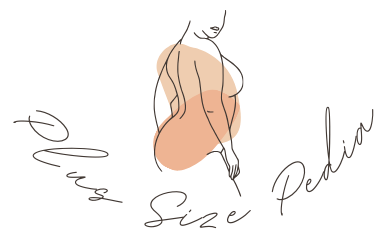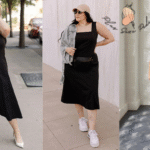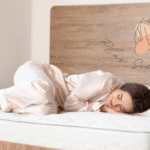Plus size women are currently defying stereotypes rather than surrendering to them, showing how far plus size fashion has come.
You will fall in love with more plus size dresses than you can count whether you are shopping at a boutique or online, but not every one of them will flatter your curves.
And why? because the right fabric selection affects most of it. An ensemble can be made or broken by the type of fabric used.
Certain textiles look different on every body type, and some are better suited for plus size women than others.

For example, on a plus size woman, a silk, velveteen, or sateen outfits will fit better than a net dress with ruffles.
The Top 6 Materials for Plus Size Outfits
Finding attractive materials that will complement your beauty and keep you comfortable is essential for those with full figures.
See our guide to the different types of plus size dress fabrics that will accentuate your lovely curves to the hilt.
1. Viscose
If you like silk, choose this specific fabric. The best thing is that it fits perfectly and doesn’t stretch.
Viscose is a breathable substitute that women can choose for their plus size cocktail dresses if they want a more synthetic look.
In addition, the material is cozy to wear all year round. Another name for rayon, viscose is renowned for its excellent drape.
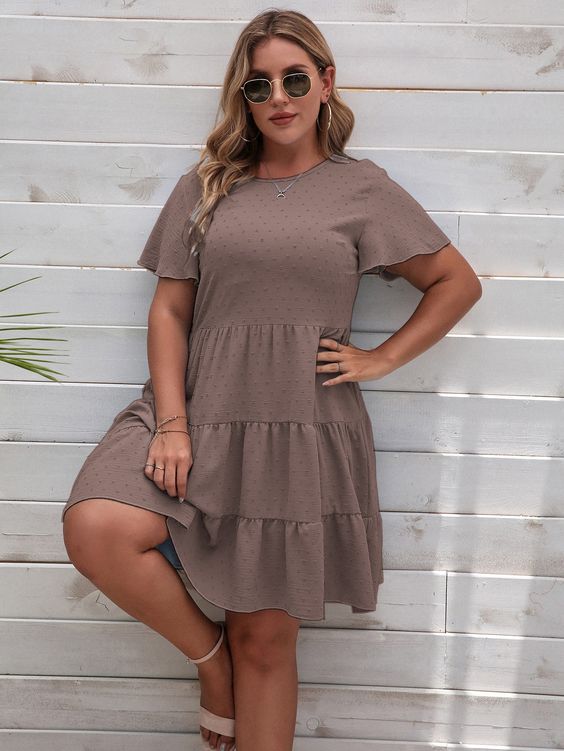
2. The polyester
Women who want to remain true to their shapes frequently choose polyester, which is a common choice in the plus size fashion industry. There is no known crease to this fabric.
Polyester retains its color and does not shrink or fade even after repeated washings.
The fact that polyester, when used in cotton mixes, can help extend the life of cotton fibers, is another reason why polyester is favored. It is best suited for the winter months.
3. Satin
Satin, which was originally made of silk, is one of the luxurious fabric options. It drapes beautifully and has a sleek, smooth feel to it.
Satin is a great option if you’re looking for plus size prom dresses because it’s a lightweight, breathable fabric that will keep you comfortable all night long and there will be lots of dancing.
So, your best option if you want to look extremely elegant at any evening event is to wear a satin dress.
Most people adore satin dresses because of their glossy finish.
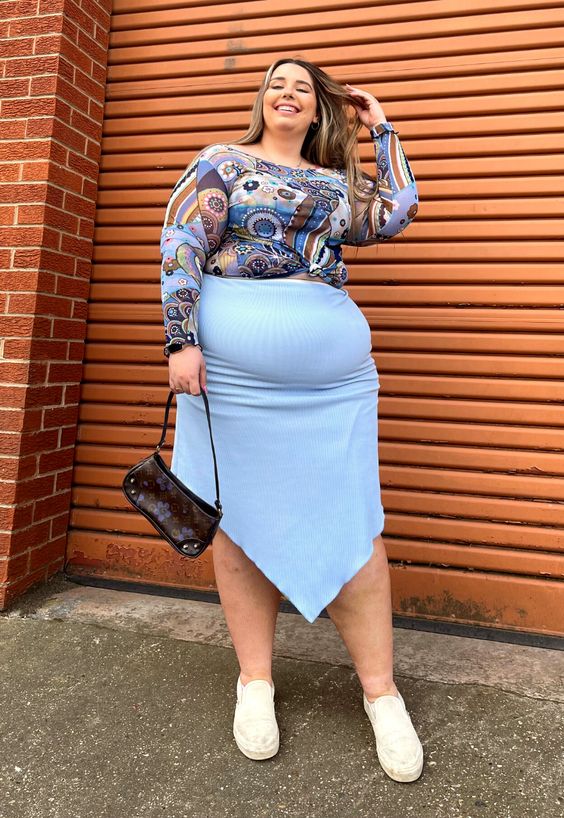
4. Chiffon
Because of its comfort and breathability, it is a popular option for many types of plus size dresses throughout the year.
In the fashion industry, chiffon is commonly referred to as the “floaty fabric” because, despite not being skin tight, it has the ability to draw attention to the right areas of the body and cover up flaws.
Chiffon, which is categorized as a sheer fabric, drapes fluidly. It is also suitable for plus size wedding gowns if you wish to celebrate in comfort and style.
5. Velvet
Velvet is typically made from silk and is regarded as the most elegant and attractive plus size fabric.
It has the best drape and feels nice against the skin, adding to its comfort factor.
In addition, the fabric is strong and holds its color through several washings.
6. Cotton
Cotton drapes nicely are cozy and absorbent and come in a wide range of quality. In general, search for long fiber length and a close weave.
Take a thread from the cotton’s cut end, separate it, and search for fibers longer than one inch.
To appear more crispy, heavier, and more expensive, some cotton fabrics are heavily starched, or sized; however, the starching will naturally come out when the fabric is dry cleaned or laundered.
Holding a cotton piece up to the light, you can frequently see starch particles attaching between the warp and the weft.
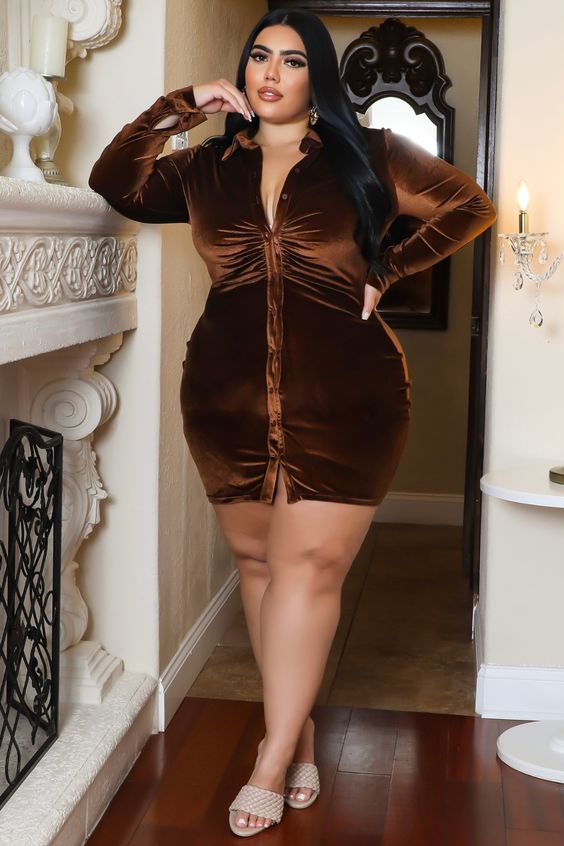
While bright colors may fade and many cottons may need to be ironed, most cottons launder fairly well.
Cotton garments should only be dry cleaned if they have intricate construction, like a tailored jacket, or if the colors are vivid, like an evening gown with cerise pique.
Dry cleaning solvents can leave residues actually, other people’s dirt that cause yellowing on whites and light colors, and they are particularly hard on natural fibers. Cotton is a great material option for plus sized clothing of all kinds.
7. Rayon
One of the earliest synthetic fibers is rayon, which was created in 1889 as a replacement for silk, linen, wool, and cotton using the cellulose found in wood pulp.
When sources of natural fibers were disrupted during and after World War I and World War II, it was widely used.
When dry, rayon fabrics are strong; when wet, they become weak. They drape beautifully, are abrasion resistant, and are breathable. Additionally, most of them wrinkle badly and shrink when washed.
It can be challenging to predict a fabric’s performance because many fabrics labeled “rayon” do not specify what kind of rayon they are made of.
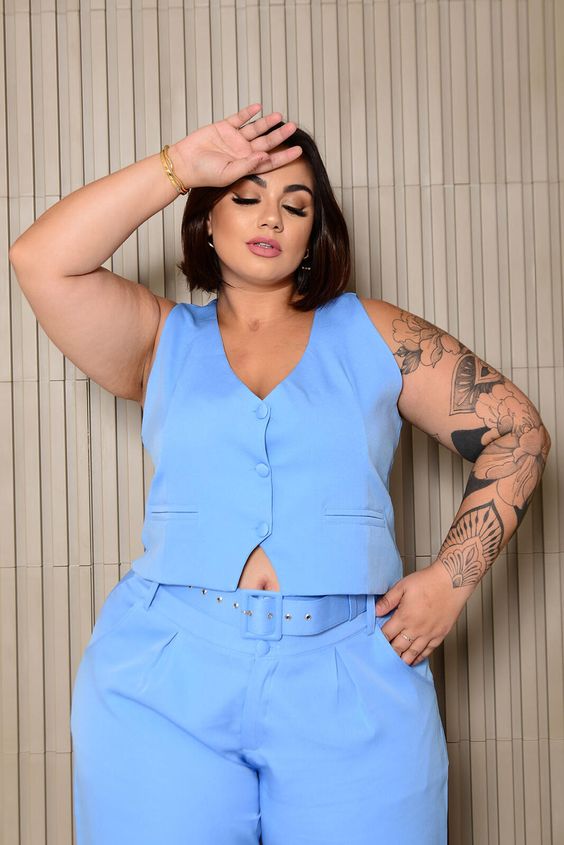
When in doubt, purchase a 1/4 yard swatch and shrink it before adding to it.
If a crisp, tweedy suiting is underlined and dry cleaned, it might work well, but after washing, it might become a gauzy, soft, and wrinkled mess.
Out of all the rayon manufacturing processes, viscose rayon has the highest tendency to wrinkle.
Cuprammonium rayon is a comparatively finer fiber that is more clear and more drapable, launders more easily, and wrinkles less than viscose rayon. The cellulose is dissolved using copper compounds.
One example of this kind of rayon is found in Bemberg lining fabrics. The hand of polynosic rayon is akin to fine cotton, and it is fully washable.
A relatively new process in the United States is used to manufacture a rayon similar to polynosic rayon, which is marketed under the trade name Tencel.
Conclusion
Because of their versatility, these previously mentioned flattering materials have become quite popular in the plus size fashion industry.
The next time you shop for plus size clothing, be sure to give fabrics the utmost consideration because they have the power to completely transform your appearance.
